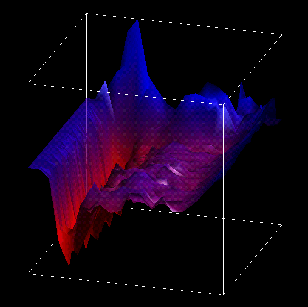ANOLEA (Atomic Non-Local Environment Assessment)
Please send any comments and enquiries to:
Francisco Melo Ledermann
P. Universidad Católica de Chile : Tel: +56-2-2686 2279
Laboratorio de Bioinformática Molecular : Fax: +56-2-2475 0051
Alameda 340, Santiago. : E-mail: fmelo@bio.puc.cl
Santiago. Chile. :
 What is ANOLEA ?
What is ANOLEA ?
ANOLEA (Atomic
Non-Local Environment Assessment) is a server that
performs energy calculations on a protein chain, evaluating the "Non-
Local Environment" (NLE) of
each heavy atom in the molecule.
The energy of each pairwise interaction in this non-local environment is taken from a distance-dependent
knowledge-based mean force potential that has been derived from a database
of 147 non-redundant protein chains with a sequence identity below 25% and solved by X-Ray crystallography with a resolution lower than 3 Å.
We strongly recommend to read the help provided for each mandatory parameter when
using ANOLEA for the first time.
 Assessing Protein Structures
Assessing Protein Structures
The assessment of protein structures is a delicated matter. Currently, there is not a single
method able to consistently and accurately predict the three-dimensional structure
of a protein. Moreover, our lack of knowledge about protein folding and stability makes difficult
to develop such a method.
Similarly, there is no single method able to consistently and accurately predict the errors
in a protein structure. For that reason, we strongly recommend to use as many as possible
different methods when assessing a protein structure (below we provide links to some well-
known and widely used methods). Different methods use different approaches, thus they can
complement to each other. In that way, you can have more confidence about the predicted
error of specific regions in the protein.
 A List of 'Well-known' and 'Widely-used' Methods to Assess Protein Structures
A List of 'Well-known' and 'Widely-used' Methods to Assess Protein Structures
ANOLEA FORM
 Bibliography
Bibliography
Webmaster

 What is ANOLEA ?
What is ANOLEA ? PROCHECK
PROCHECK